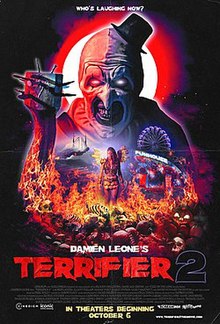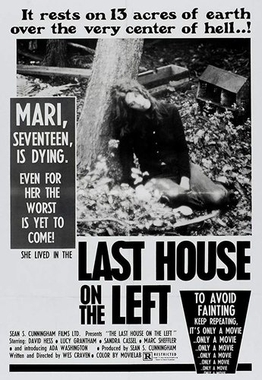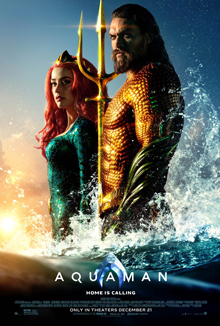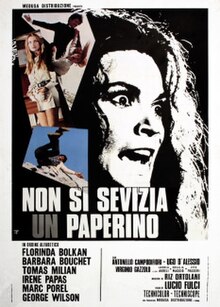
Winnie the Pooh: Blood & Honey
In some respects, I was excited for Winnie the Pooh: Blood & Honey. In most respects I wasn’t, but, in some respects, I was. This isn’t a film I will be talking about for inclusion in the Nickelbib Nightmare Deck nor is a film I will be nominating soon for the Dustjacket Hall of Fame. It was never a film I had considered as in contention for either accolade either. This is a film a friend and I chose to watch while we shot the breeze and reminisced, one that we ourselves weren’t too heavily invested in. At the same time, I can’t say I wasn’t enthusiastic for the film.
In the same way I will most certainly watch The Mean One when I can, I found myself drawn to Blood & Honey. It felt like a relic of a bygone era, like something back from the eighties, a decade where I am still finding unheard of slasher films like it is a bottomless well. They aren’t usually very good (although sometimes you will find something to appreciate from them – for example, The Burning isn’t what I’d call a good film, but Tom Savini is what I would call a good make-up artist in horror), but I appreciate them. If there was ever a time to use the phrase ‘schlock,’ I believe that would apply to my expectation of this film.
In total, I found Winnie the Pooh: Blood & Honey both better and worse than what I expected.
The film was directed by Rhys Frake-Waterfield.
His prior work includes a film called Firenado, and I believe that is inline with what I expected him to have previously directed (and who knows? Maybe Firenado is fantastic!), a low-budget, exploitative horror flick, cashing in on the absurdity of its own existence more than its merit. This isn’t always a bad thing, per se. It seldom leads to high-art exactly, but it sometimes leads to a fun film. For example, a film like Head of the Family or Chopping Mall is completely worthwhile and more than watchable. Sometimes though, it leads to “so bad, it’s good” cinema, which doesn’t really appeal to me, personally.
Some people like that. The Asylum films or mockbusters, and films like Sharknado, but I am not among them. It is a fine line and some moviegoers may not be able to differentiate them, but it is an important separation in my opinion. Something like Chopping Mall isn’t entertaining me with how absurdly bad it is, but by how well it is able to portray an absurd concept. Enjoyable performances. Fun, likable characters. Good makeup. Clever camerawork. They are all variables that factor in, and if you succeed at those variables or others, you will make an enjoyable film – no matter what, if you enjoy a film, that implies it has some kind of good-quality, not a bad one.
The camerawork in Blood & Honey is better than expected.
This is, for the most part, the extent of the praise I will ultimately afford the film. I had an image in my head before I watched the film of what I feared it may look like. I imagined two different possibilities – cheap, grainy-looking footage and a shaky cam, or that heavy digital aesthetic that has become more prevalent, where it looks deceptively high-quality yet very fake and unappealing to the eye.
This film doesn’t have a high-production value by any means, but it was better than I expected (which was truly bottom of the barrel). By the end, it did skirt awfully close to bottom of the barrel, but, early on, it had a couple shots here and there that suggested a cinematic prowess I hadn’t expected. It isn’t anything that will blow your hair back, but it is still better aesthetically than some of what’s out there. Some critics singled out its bad camerawork as a main point of criticism. They’re not wrong. They’re simply not succumbing themselves to what I am.
This is a film that wasn’t meant to find the amount of eyeballs it has – akin to something like Pinocchio’s Revenge or The Curse of Humpty Dumpty. This is something no one was meant to care about (something I wasn’t even supposed to be writing about!), that managed to ride a meme-like “for the lulz” popularity and the prior theatrical success of Terrifier 2 (and other horror films post-Covid) into becoming a successful film.
The costumes look bad. Early on, we are treated to a brief animated introduction meant to set the stage for the film itself. It isn’t anything too crazy, but I liked it. The costumes, however, leave a lot to be desired. It isn’t even that they look bad, it’s that they’re made to look bad. They look on par with the film they are in. The issue is that they aren’t shot in the best ways (here I am contradicting the single praise I offered the film, but I digress). If you have a costume that looks like a costume, the best thing you can do is use your lighting and visuals to try and disguise that fact. It’s a basic, evergreen strategy in horror – if you have a shoestring budget, less can be more. Obviously, this type of film is more about excess and in your face absurdity, but, for a film that plays it straight, I believe it would have done itself a favor to not have shown shots that made it so blatantly apparent that a human’s face was behind the Pooh mask. Just keep it darkly lit or be selective about how you frame him. This film does neither.
The story doesn’t exist. Well, I mean, it does, but it doesn’t. It is an incoherent mess that only further unravels the longer you think about it or try to dissect it (so don’t). As prefaced, I wasn’t horribly invested in Blood & Honey, but I did pay attention to it. And, you know what? I couldn’t tell you what was happening / anything about the characters in the film. I mean, you did have Christopher Robin and Pooh, but the rest of the cast? I couldn’t tell you a single character trait about them. They are empty characters, void of any and all traits (like Piglets lined up for the slaughter).
The concept of Winnie the Pooh: Blood & Honey actually seems like an alright idea for a slasher film. Christopher Robin left Hundred Acre Woods and all the animals behind, and while he was absent from them, they either starved to death or went mad. It’s both dark and a perfectly fine idea for a slasher film.
I can imagine a lot of different angles for it.
It is such an easy idea, after all. Have Christopher Robin show up with a bunch of friends, and then, let a slasher film be a slasher film. It is an easy foundation to build upon, but the film feels like it never develops its ideas beyond their infancy. (We could even have it be that a group of hunters murdered and made pelts out of Winnie and friends, justifying why it was clearly men in costumes!)
The deaths are largely uneventful. They’re neither grotesquely gory (a la Hatchet or Terrifier) or particularly clever, they simply are.
The acting is subpar and the dialogue is one-dimensional.
I don’t usually write reviews like this on Nickelbib.com, and it is for a reason. I write to create a “Best of” list, never a “Worst of”. I don’t like to punch down on a film that tries in good faith and I don’t like to play the “woe is me” reviewer who suffers through a film that supplies low-effort entertainment. For that reason, I will simply say that I hope they look at this as an opportunity for improvement.
















